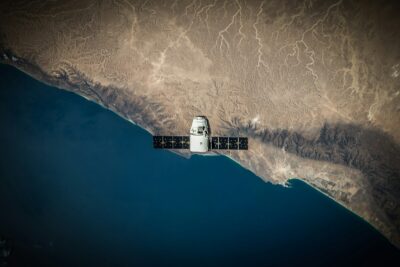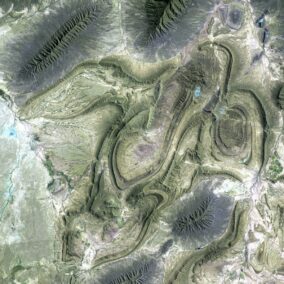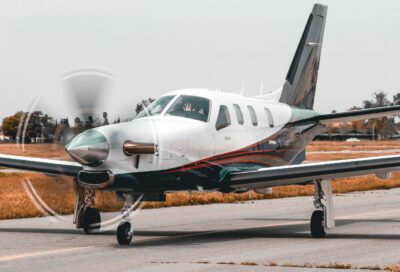Satellite Navigation Technology: A Game Changer in Aviation
Boosting Aviation Safety with Satellite Navigation Technology
Satellite navigation technology has revolutionized aviation by significantly enhancing safety measures. In countries like Saudi Arabia and the UAE, where aviation is a critical industry, the implementation of advanced satellite navigation systems ensures safer skies. These systems provide precise, real-time location data, which is crucial for avoiding collisions and managing air traffic efficiently. By integrating this technology, airlines can better navigate through adverse weather conditions and maintain optimal flight paths, thereby reducing the risk of accidents.
In addition, satellite navigation systems enable more accurate landing and takeoff procedures. For instance, airports in Riyadh and Dubai have adopted these technologies to improve their operational safety. The precision of satellite-based navigation aids pilots in executing safer approaches and landings, particularly in low-visibility conditions. This not only enhances passenger safety but also boosts the overall reliability of airline operations.
Furthermore, satellite navigation technology supports enhanced communication between aircraft and ground control. This seamless communication is vital for the timely transmission of crucial flight information, thus preventing potential mishaps. The integration of such sophisticated systems underscores the commitment of Saudi Arabia and the UAE to maintaining the highest standards of aviation safety.
Improving Situational Awareness with Cutting-Edge Technology
The introduction of satellite navigation technology in aviation has significantly improved situational awareness for pilots and air traffic controllers. In busy airspaces like those over Riyadh and Dubai, where traffic congestion is common, enhanced situational awareness is crucial. This technology provides detailed, real-time data about the aircraft’s surroundings, including the position of other aircraft, weather patterns, and potential obstacles.
Satellite navigation systems offer advanced mapping capabilities that display comprehensive flight paths and airspace configurations. This allows pilots to make informed decisions quickly, enhancing their ability to respond to unexpected situations. For example, if an aircraft deviates from its planned route, the system immediately alerts the pilot and air traffic control, enabling prompt corrective actions.
In addition, these systems facilitate better coordination between multiple aircraft, reducing the likelihood of mid-air collisions. By providing a clear and accurate picture of the airspace, satellite navigation technology helps pilots maintain safe distances from other aircraft and navigate complex airways more effectively. This is particularly beneficial in regions with high air traffic density, such as the Middle East.
Moreover, the integration of artificial intelligence (AI) with satellite navigation technology further enhances situational awareness. AI algorithms can analyze vast amounts of data to predict potential hazards and suggest optimal flight routes. This fusion of AI and satellite navigation is a testament to the innovative approaches adopted by Saudi Arabia and the UAE to enhance their aviation infrastructure.
Operational Efficiency: The Key to Modern Aviation
Operational efficiency in aviation has been dramatically improved through the adoption of satellite navigation technology. This advancement is particularly evident in the streamlined flight operations witnessed in Saudi Arabia and the UAE. By providing precise navigation data, satellite systems enable airlines to optimize flight routes, reducing fuel consumption and minimizing delays.
Efficient route planning facilitated by satellite navigation reduces flight times and enhances punctuality. Airlines can now devise more direct flight paths, avoiding congested airspaces and unfavorable weather conditions. This not only saves time and fuel but also reduces operational costs, contributing to the overall profitability of the aviation industry.
Moreover, satellite navigation technology plays a crucial role in efficient air traffic management. By accurately tracking the positions of multiple aircraft, air traffic controllers can manage airspace more effectively, minimizing delays and enhancing the flow of air traffic. This is particularly important for major hubs like Riyadh and Dubai, where efficient air traffic management is essential to handle the high volume of flights.
The integration of blockchain technology with satellite navigation systems is another innovative approach being explored in the aviation industry. Blockchain can enhance data security and transparency, ensuring that navigation data is tamper-proof and reliable. This combination of cutting-edge technologies underscores the commitment of Saudi Arabia and the UAE to maintaining their status as global leaders in aviation.
Future Prospects: Embracing Advanced Technologies
Artificial Intelligence and Generative AI in Aviation
The future of aviation is being shaped by the integration of artificial intelligence (AI) and generative AI with satellite navigation technology. These advanced technologies are poised to revolutionize various aspects of aviation, from flight operations to passenger services. In Saudi Arabia and the UAE, the adoption of AI-driven solutions is paving the way for more efficient and innovative aviation practices.
AI algorithms can analyze flight data to optimize routes, predict maintenance needs, and enhance overall operational efficiency. By leveraging generative AI, airlines can create predictive models that simulate various flight scenarios, enabling better decision-making and risk management. This proactive approach to aviation safety and efficiency is a testament to the forward-thinking strategies adopted by Saudi Arabia and the UAE.
Furthermore, AI-driven systems can enhance the passenger experience by providing personalized services and improving customer satisfaction. For instance, AI can analyze passenger preferences to offer tailored in-flight services and recommendations. This not only enhances the travel experience but also boosts the competitive edge of airlines operating in the region.
The Metaverse: A New Frontier in Aviation
The concept of the metaverse is gradually making its way into the aviation industry, promising to redefine how airlines operate and interact with passengers. In the metaverse, airlines can create virtual environments that simulate real-world scenarios, providing immersive training for pilots and crew members. This innovative approach to training can significantly enhance the skills and preparedness of aviation professionals.
Airports in Riyadh and Dubai are exploring the potential of the metaverse to improve passenger services. Virtual reality (VR) and augmented reality (AR) technologies can be used to create interactive experiences for travelers, such as virtual tours of the airport and real-time flight information. This not only enhances the passenger experience but also streamlines airport operations.
Additionally, the metaverse can facilitate remote collaboration and communication between aviation stakeholders. For example, airline executives and managers can hold virtual meetings and conferences, reducing the need for physical travel and promoting efficiency. The integration of the metaverse with satellite navigation technology represents a bold step towards a more connected and innovative aviation industry.
Leadership and Project Management in Modern Aviation
Effective leadership and project management are crucial for the successful implementation of advanced technologies in aviation. In Saudi Arabia and the UAE, strong leadership and strategic project management have been key drivers of the region’s aviation success. By fostering a culture of innovation and collaboration, these countries have positioned themselves as global leaders in the aviation sector.
Leaders in the aviation industry must possess a deep understanding of modern technologies and their potential applications. They must be able to guide their teams through the complexities of integrating satellite navigation, AI, blockchain, and other advanced systems. This requires a combination of technical expertise and visionary leadership.
Project management skills are equally important in ensuring the successful deployment of these technologies. Effective project management involves careful planning, resource allocation, and risk management. By adopting best practices in project management, aviation leaders can ensure that technological innovations are implemented smoothly and deliver the desired outcomes.
In conclusion, the widespread adoption of satellite navigation technology has revolutionized the aviation industry, particularly in Saudi Arabia and the UAE. By enhancing safety, situational awareness, and operational efficiency, this technology has set new standards for modern aviation. As the industry continues to evolve, the integration of AI, blockchain, the metaverse, and other advanced technologies will further drive innovation and excellence. With strong leadership and effective project management, the future of aviation looks promising and bright.
#SatelliteNavigationTechnology #AviationSafety #SituationalAwareness #OperationalEfficiency #ModernAviation #SaudiArabia #UAE #AIinAviation #MetaverseInAviation #LeadershipInAviation #ProjectManagement























